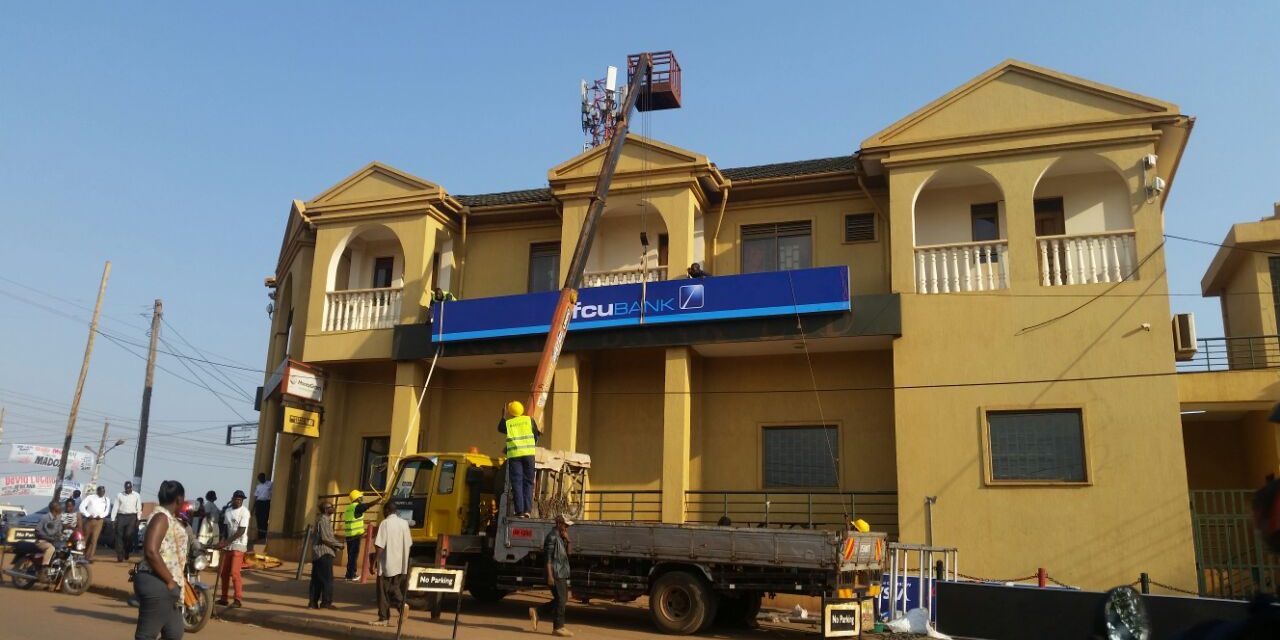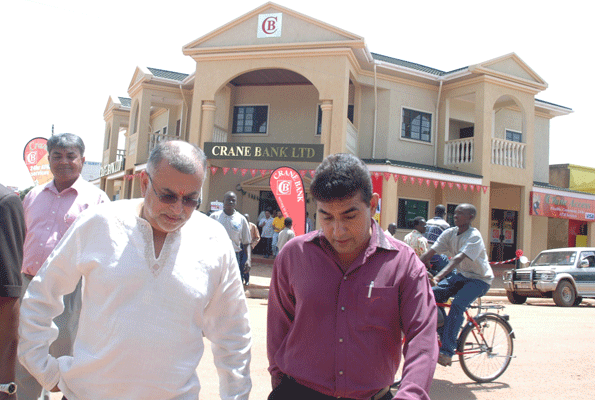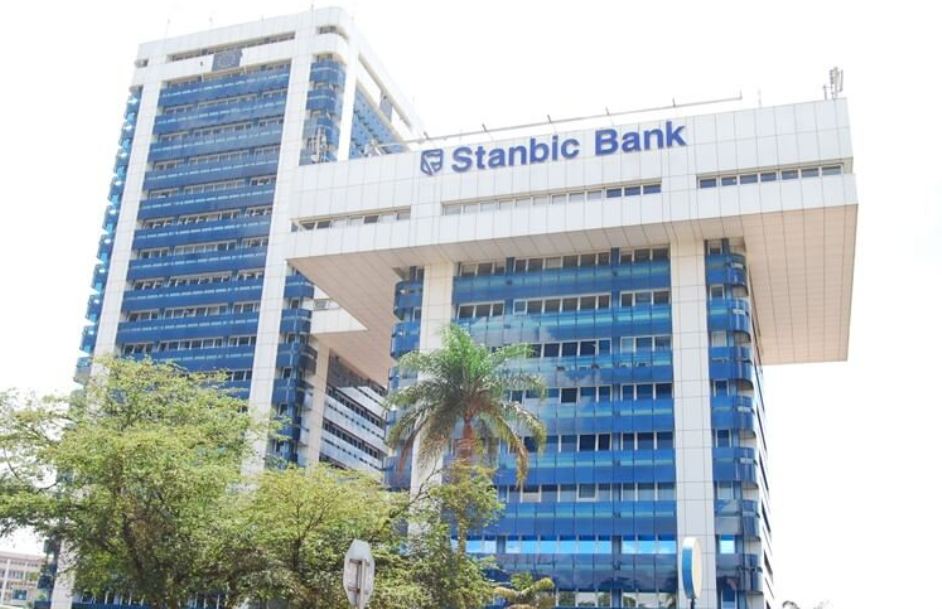The controversial collapse of Crane Bank, Uganda’s then 4th largest bank in terms of assets has been in the news since the last quarter of 2016.
On October 20, 2016, the Bank of Uganda (BoU) announced that it had taken over the management of Crane Bank Ltd after the bank became “a significantly undercapitalized institution.”
According to BoU, the minimum capital requirement for a bank to operate in Uganda is Shs25bn.
Being significantly undercapitalized means the bank has less than 50% of the statutory requirements, says BoU.
East Africa’s richest man, Sudhir Ruparelia was apparently unable to save the bank he founded and partly owned from controversially falling.
Consequently, on February 27, 2017, BoU announced the acquisition of the now defunct Crane Bank by dfcu-at an undisclosed fee. It was revealed that dfcu beat off competition from other 12 financial institutions to emerge winner.

But that wasn’t all.
On June 30, 2017, BoU filed a civil suit at the Commercial Court against Sudhir Ruparelia and his investments firm Meera Investments Ltd to “recoup funds that were fraudulently extracted from, as well as losses that were caused to Crane Bank.”
In a statement issued on July13, 2017, BoU said as a Receiver of Crane Bank Ltd (Crane Bank) and regulator of the banking sector it seeks to recover about Shs400bn, Freehold titles of Crane Bank’s branches, general damages, interest and costs.
Sudhir’s Crane Bank is also accused of not remitting US$1.4 million staff contributions to the National Social Security Fund (NSSF).
Impact of Crane Bank Saga On The Economy
But what does Crane bank saga and collapse mean to Uganda’s banking sector and the economy at large?
A 4th largest bank in a market of 25 banks (as of 2015) collapsing in a short period is unusual. Crane Bank’s total assets stood at Shs1.79 trillion in 2015, up from Shs1.72 trillion in 2014.
Although the bank shockingly recorded a whooping loss of Shs3.1bn in 2015, down from a net profit of Shs50.6bn in 2014, its capital was way above Shs200bn.
The unusual loss was a result of high Non-Performing Loans (NPLs) that increased by 122.9% in 2015. The bank’s NPLs increased to Shs142.3bn in 2015, up from Shs19.36bn in 2014.
Prior to its collapse, Crane bank had enjoyed 21 years of uninterrupted and tremendous growth.
It was not only the leading indigenous bank, but it was also among the three systemically important banks. The others were Stanbic and Standard Chartered Bank (Crane Bank has since been replaced by dfcu). A systemically important bank is one whose failure might trigger a financial crisis. They are colloquially referred to as “too big to fail”.
Analysts say the Crane Bank saga has far reaching consequences on Uganda’s banking sector and the economy at large.
“A bank owned by East Africa’s richest man (Sudhir) falling is bad news for the economy; it creates uncertainty and impacts adversely on Foreign Direct Investments (FDIs),” an analyst, who preferred not to be quoted told Business Focus.
It added: “The situation is killing confidence in the market; borrowers and lenders are now more cautious than ever. This isn’t good for an economy that is private sector led.”
In an exclusive interview, Dr. Fred Muhumuza, an economics expert and lecturer at Makerere University said that while some Crane bank clients were moved to dfcu and others found banks of their choice, the Crane bank saga has increased uncertainty in the market.
“It did not (Crane Bank collapse) affect the bulk of depositors, but certainly the borrowers are still suffering. Some were given little time to complete loans on new rates; others of course miss the personal gains they used to bet from personal knowledge of staff and owners,” Muhumuza said.
He added: “It has also increased uncertainty in the sector as people now doubt even when BoU says all is ok.”
Other banks that have collapsed in recent years include National Bank of Commerce, Global Trust Bank and Imperial Bank (its collapse was due to the fall of its parent company in Kenya).
In an earlier interview, Prof. Augustus Nuwagaba, an international consultant on economic transformation described Crane bank collapse as ‘very bad news’ for Uganda’s budding financial sector.
“The robustness and strength of the economy depends on the stability of the financial sector. If it’s unstable, the economy too will not be stable,” Nuwagaba said.
He added: “Uganda is generally in an unhealthy economic environment with high interest rates. Aggregate demand is too low; people don’t have disposable income to consume and the cost of living is going high as the Shilling depreciates [further against major currencies]….It’s not only commercial banks that are suffering. All Ugandans are suffering because the level of stability is extremely low.”
Like the other experts, Charles Ocici, an ex-banker and Executive Director at Enterprise Uganda, says: “When a tightly supervised sector starts to go down, you have got to worry. Banking industry is operating under very tough times.”
Only Three Indigenous Banks Left
It is important to note that a strong banking sector plays a crucial role in the economic development of the country. Analysts say local banks are even more important in the growth of an economy.
If the economy is dominated by foreign banks, some laws like capping interest rates like it was done in Kenya in 2016 may not be applicable because the host country will be dancing on their tunes.
The demise of Crane Bank, a once strong and sound indigenous bank means that Uganda’s banking sector is largely dominated by foreign banks. Out of now the 24 operating banks, only three can be considered indigenous. These include Centenary, Housing Finance and Finance Trust.
Shockingly, neighbouring Kenya has more banks operating in Uganda than the host country; ABC, Diamond Trust Bank, KCB, Equity, NC Bank, Commercial Bank of Africa and Bank of Africa are all from Kenya.
Although foreign owned banks pay taxes and employ many Ugandans, they are at liberty to repatriate the profits to their mother countries especially after paying the 30% corporation tax.






